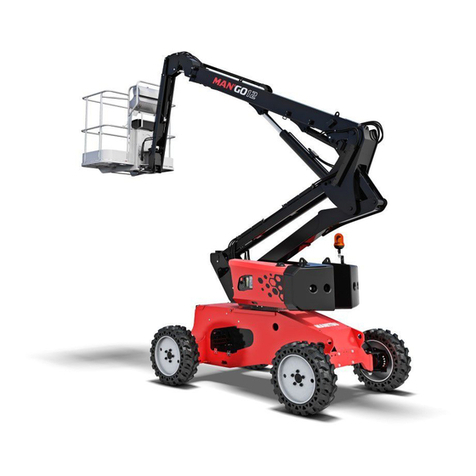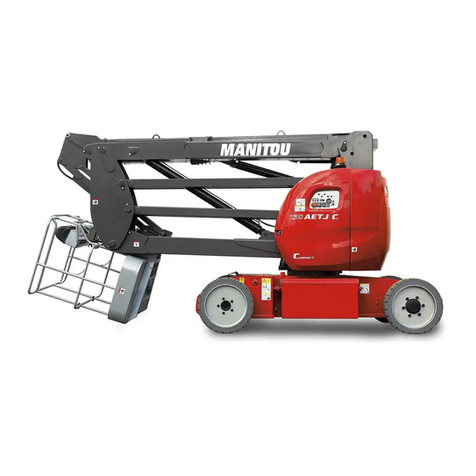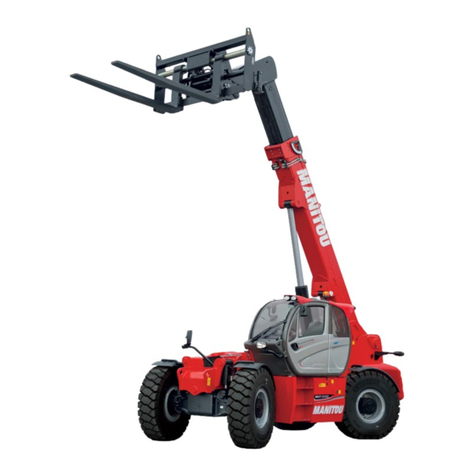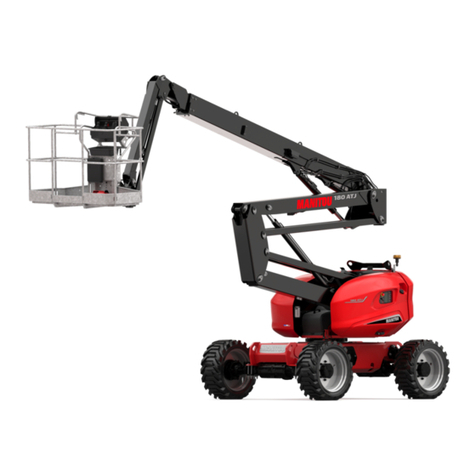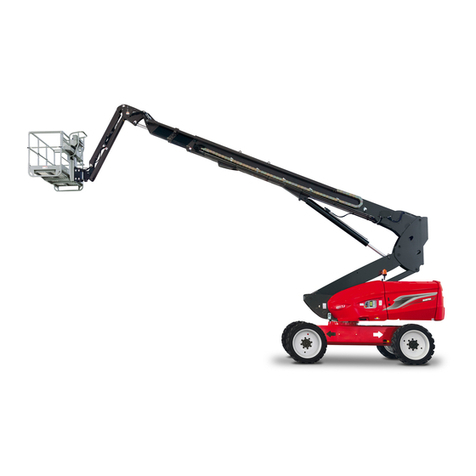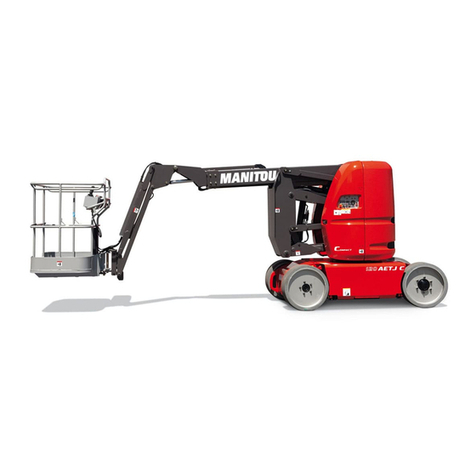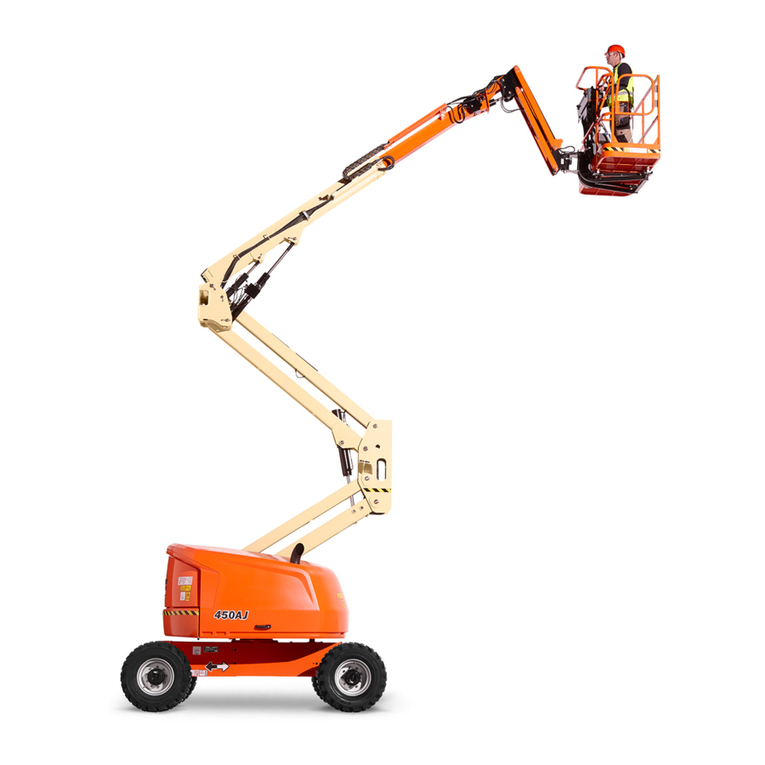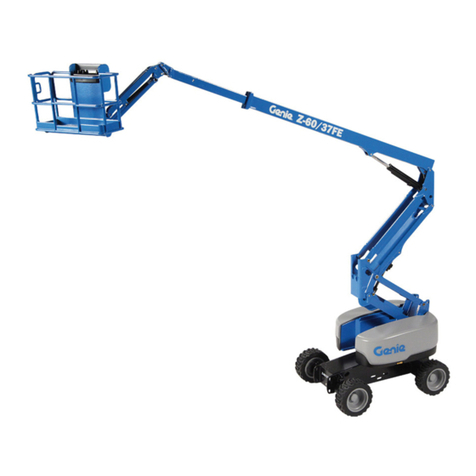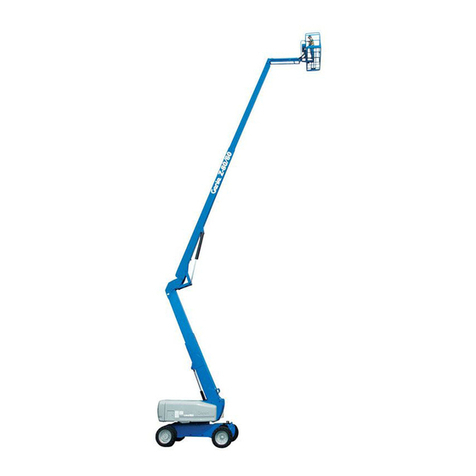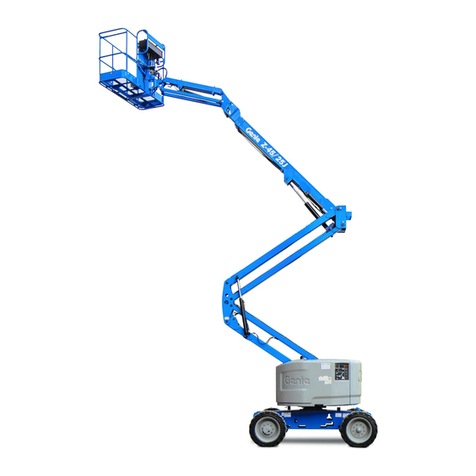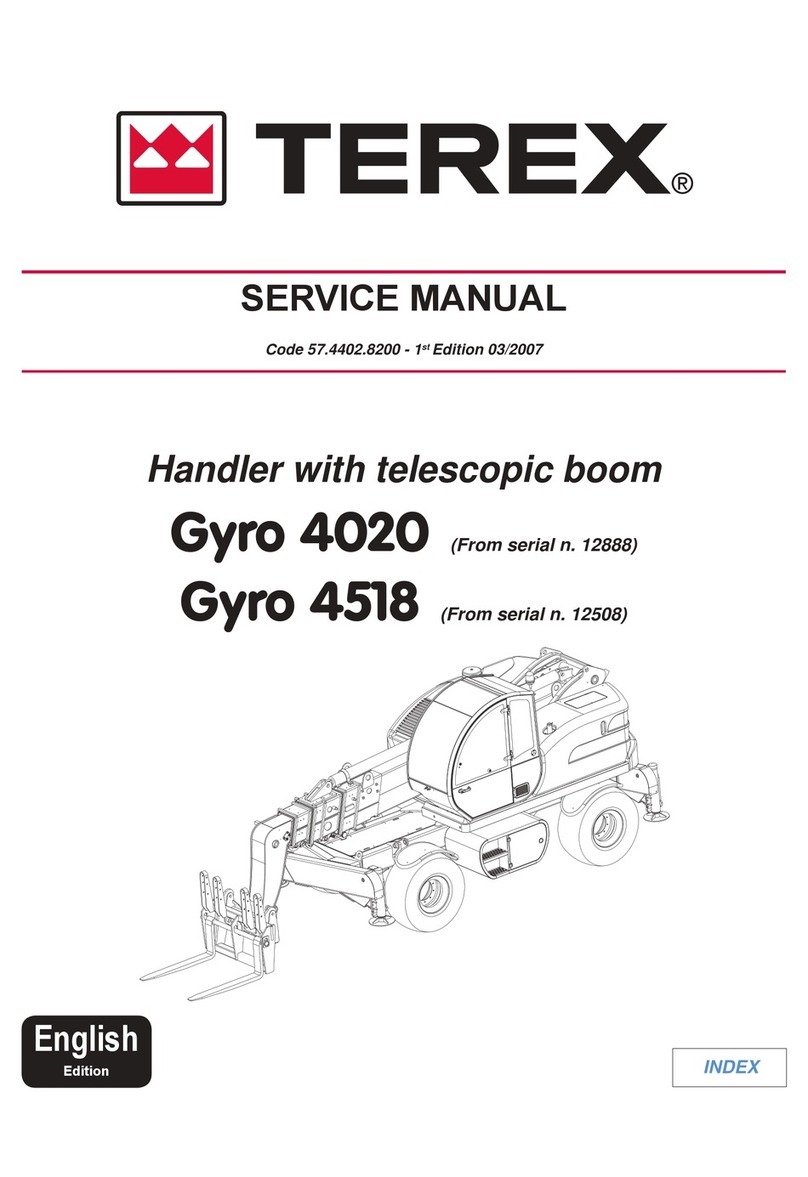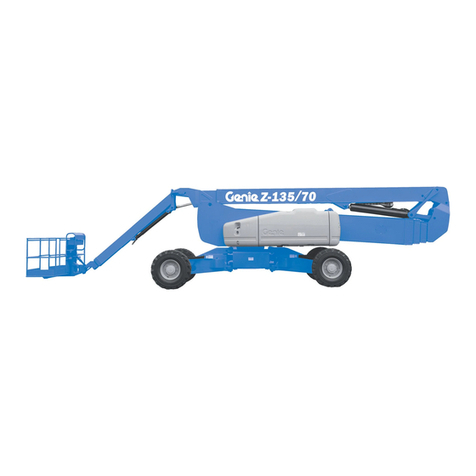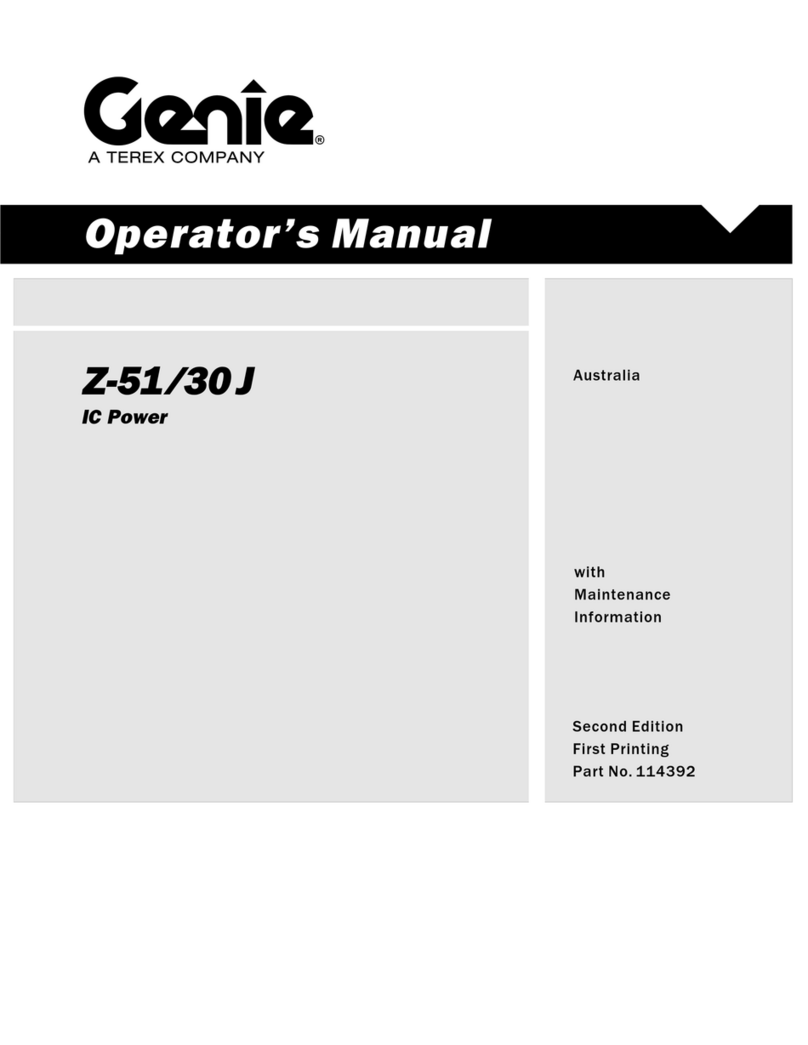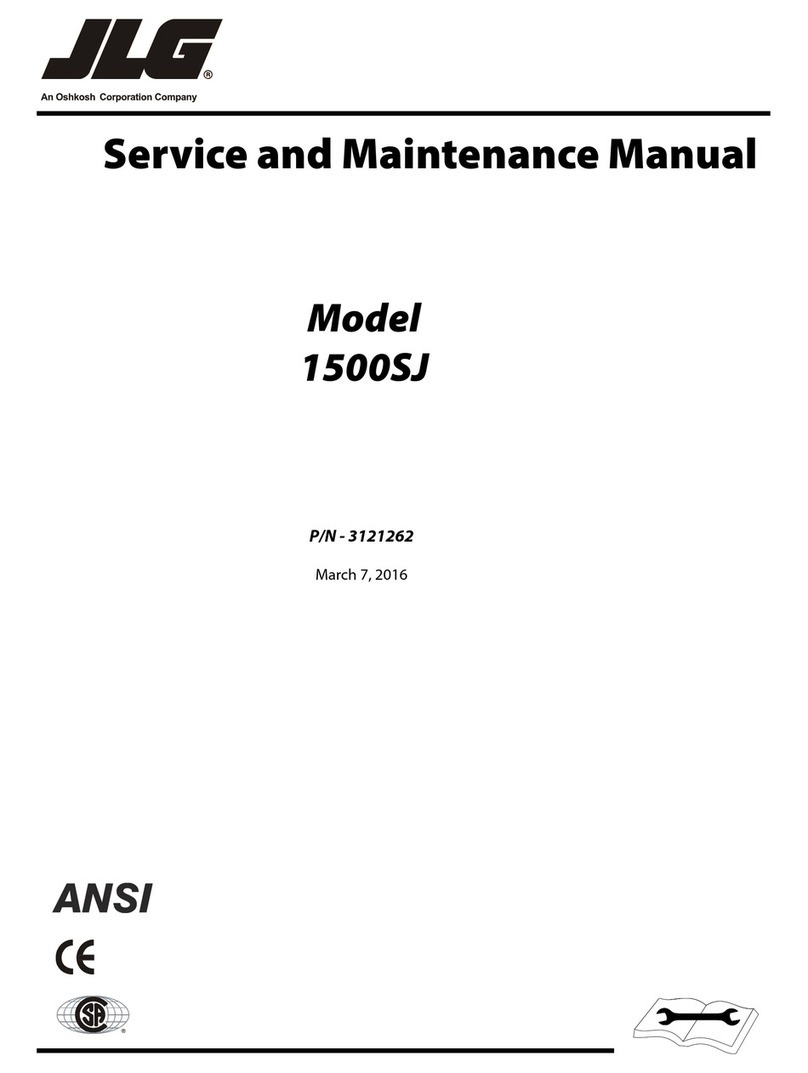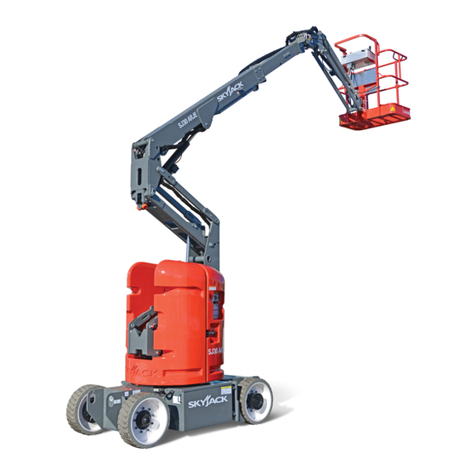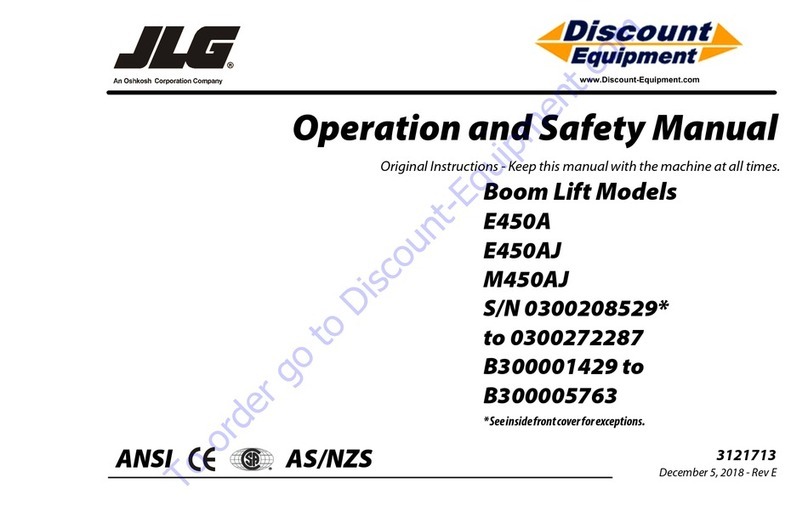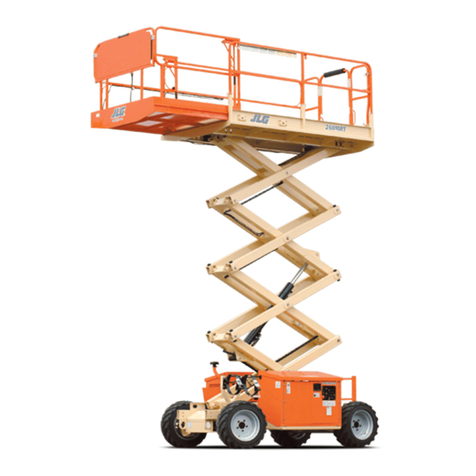1 - 4
INSTRUCTIONS TO THE COMPANY MANAGER
THE SITE
Proper management of the personnel lifting platform’s area of travel will reduce the risk of accidents:
• Ground not unnecessarily uneven or obstructed.
• No excessive slopes.
• Pedestrian traffic controlled, etc.
THE OPERATOR
- Only qualified, authorised personnel can use the platform. This authorisation is given in writing by the appropriate person
in the establishment where the platform is to be used and must be carried permanently by the operator.
IMPORTANT
On the basis of experience, there are a number of possible situations in which operating the platform is contra-indicated.
Such foreseeable abnormal uses, the main ones being listed below, are strictly forbidden:
- The foreseeable abnormal behaviour resulting from ordinary negligence, but which does not result from any wish to put the machinery to any improper use.
- The reflex reactions of a person in the event of a malfunction, incident, fault, etc. during operation of the platform.
- Behaviour resulting from application of the “principle of least effort” when performing a task.
- For certain machines, the foreseeable behaviour of such persons as: apprentices, teenagers, handicapped persons, trainees tempted to drive a platform, operators
tempted to operate a truck to win a bet, in competition or for their own personal experience.
The person in charge of the equipment must take these criteria into account when assessing the suitability of a person to drive.
IMPORTANT
OBTAIN INFORMATION ON:
- How to behave when there is a fire.
- The location of the nearest first aid kit and fire extinguisher.
- The emergency telephone numbers for calling (the doctors, ambulance, hospital and fire brigade).
PLATFORM
A – SUITABILITY OF THE PLATFORM FOR THE TASK
- MANITOU has ensured that this platform is suitable for use under the standard operating conditions defined in this
operator’s manual, with an OVERLOAD test coefficient of 1.25 and an OPERATIONAL test coefficient of 1.1, asstipulated
inharmonised standard EN 280 for MPLP (Mobile Personnel Lifting Platforms). Before putting the platform into operation,
the company manager must check that the platform is suitable for the work to be carried out and conduct certain tests
(in accordance with current legislation).
B - ADAPTING THE PLATFORM TO USUAL ENVIRONMENTAL CONDITIONS
- In addition to standard equipment mounted on your platform, many options are available, such as: rotating beacon light,
working light, etc. Contact your dealer.
- Take into account climatic and atmospheric conditions of the site of utilisation.
• Protection against frost (3-MAINTENANCE: LUBRICANTS AND FUEL).
• Adaptation of lubricants (ask your dealer for information).
• Engine filtration (3-MAINTENANCE: FILTER CARTRIDGES AND BELTS).
IMPORTANT
For operation under average climatic conditions, i.e.: between -15°C and +35°C, lubricants are topped up in the factory.
For operation under more severe climatic conditions, before starting up, it is necessary to drain all the circuits, then ensure correct levels of lubricants using lubricants
properly suited to the relevant ambient temperatures. The same applies to coolant.
- Preventing fire risks associated with use in dusty and flammable conditions.
- A platform operating in an area without fire extinguishing equipment must be equipped with an individual extinguisher.
Solutions are available, consult your dealer.
IMPORTANT
Diesel platforms are designed for outdoor use under normal atmospheric conditions and indoor use in suitably aerated and ventilated premises.
Electric platforms are designed for outdoor use under normal atmospheric conditions and for indoor use.
It is prohibited to use the platform in areas where there is a risk of fire or which are potentially explosive (e.g. refineries, fuel or gas depots, stores of inflammable products, etc.).
For use in these areas, specific equipment is available (ask your dealer for information).
